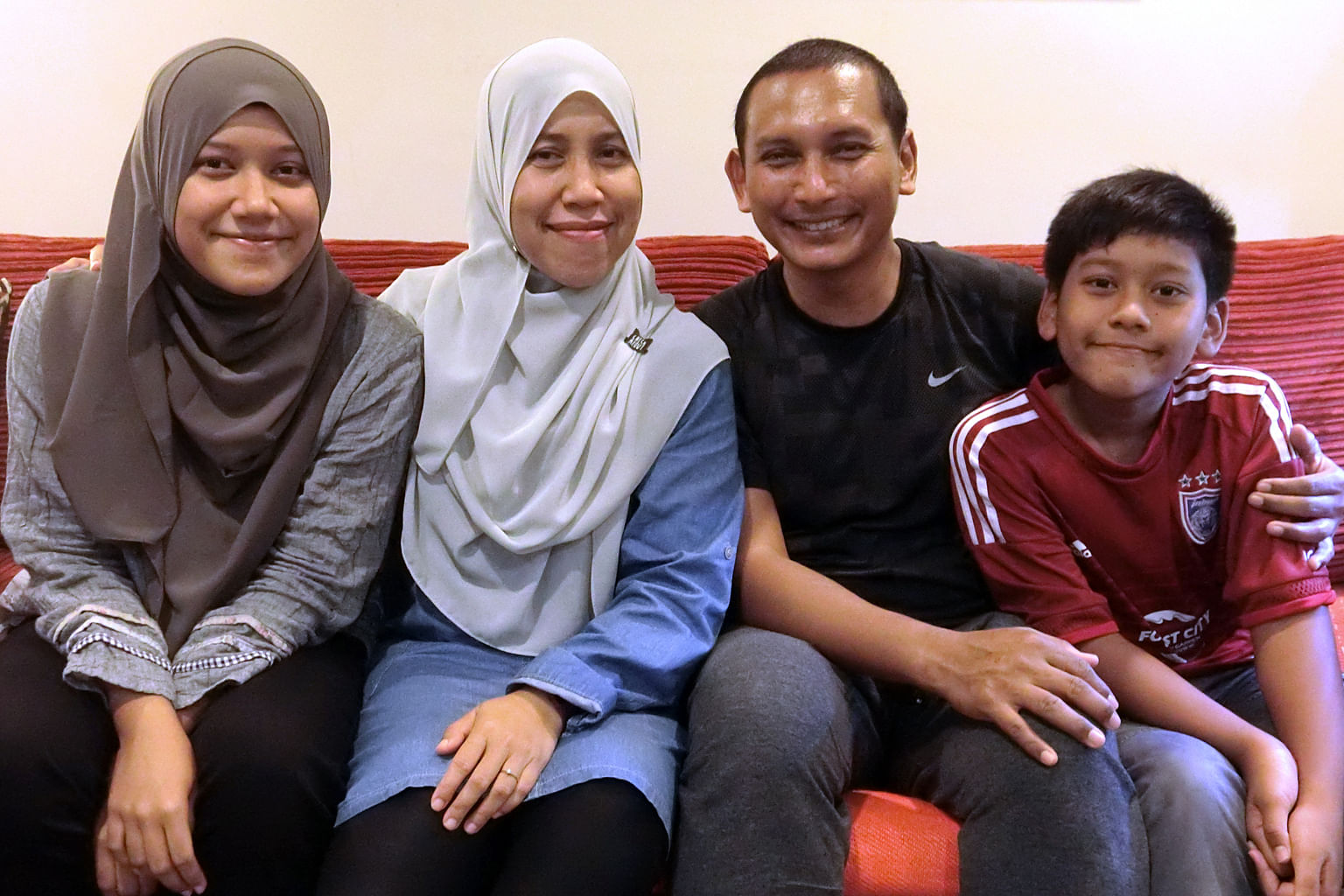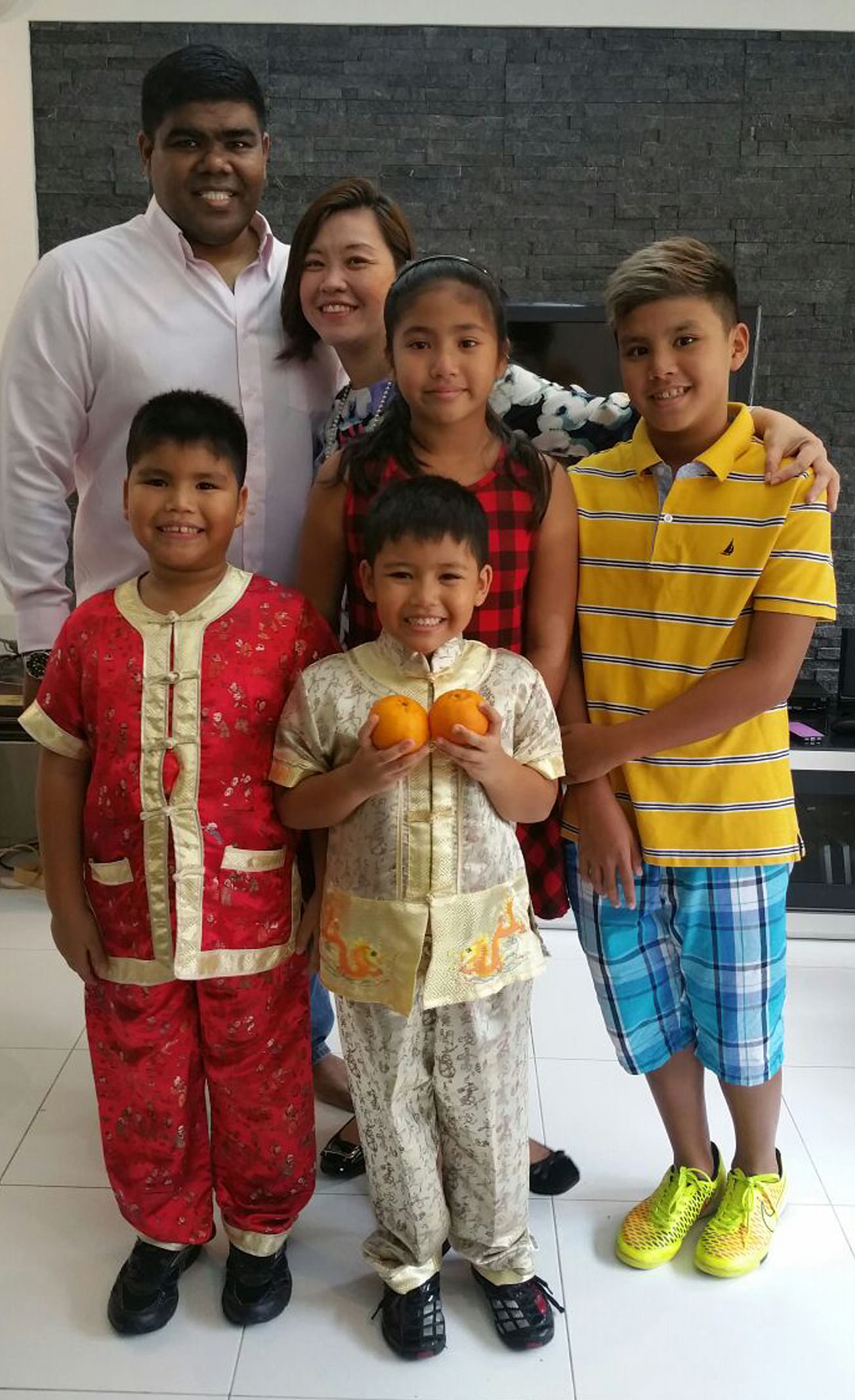Adults struggle to explain topic of race to kids
Children are usually impartial towards race, but are quick to pick up parental and societal attitudes, an expert says

Mr Chinnu Palanivelu was watching a report on American news channel CNN recently about white policemen in the United States killing black people, which sparked protests by African-Americans in the country.
His nine-year-old son, Srikanth, who was also watching, then asked: "If the police kill a bad man, shouldn't that be okay?"
"I had a hard time explaining," says Mr Palanivelu, 41, the director of an audit firm.
"I told my son that there seemed to be bias on the part of the white policemen, and that public servants have to be colour-blind and obey the rules. If they don't do their job properly, they would be investigated and punished."
Still, Mr Palanivelu - a council member of Families for Life, an organisation that promotes resilient families - felt uneasy.
"I didn't want to pursue it further. At the age of nine, he can't quite understand the complexity of the issue," he says.
Srikanth and his younger sister Srija, six, have never been victims of racism and their parents do not talk to them overtly about ethnicity.
What Mr Palanivelu and his 32-year-old wife, Vijaya, who runs an accounting firm, do emphasise though, are values such as showing everyone respect.
A survey on race, released last month, suggests the topic is complicated enough for adults, let alone having to explain the nuances to young children.
The survey, commissioned by Channel NewsAsia and conducted by the Institute of Policy Studies, found that all races in Singapore strongly believe in racial equality. However, many respondents also said they have experienced racism or hold racist attitudes. Six in 10 have heard racist remarks.
Parents The Sunday Times spoke to have different approaches when it comes to talking to their children about race.
Ms Andrea Kwan, 41, a stay-at-home mum of Chinese and Eurasian parentage, is married to a 36-year-old project manager who is Chinese. She does not go out of her way to talk to their two daughters, aged five and four, about race, but introduces the topic when the opportunity arises.
For example, if they pass by the Geylang Serai bazaar during Hari Raya Puasa, she would tell the children how the festival is celebrated by Malay Muslims.
She says: "They've also been asking about Joseph Schooling after his Olympic win, which was a good chance to talk about my Eurasian heritage. During National Day, I'll explain what the pledge means about being one united people, regardless of race, language or religion."
But Ms Susan Ku, 42, who works in the media industry, prefers not to point out racial differences to her five-year-old son as it "may make him feel that race is an issue".
She adds that he is already being taught in school to be aware of ethnic diversity, as Racial Harmony Day is celebrated on July 21 every year. The day, launched in 1997, commemorates the race riots that started on July 21, 1964.
Procurement manager Danny Tan, 44, on the other hand, takes it upon himself to teach his sons, aged 15 and 12, about racial harmony - something he has been doing since they were preschoolers.
He makes it a point for his family to visit his friends' homes during Hari Raya and Deepavali. "It's a good way to know about other races and religions," he says.
He thinks this approach may have played a role in his younger son Malcolm's friendships. One of his closest friends is Indian and Malcolm, too, has a close Indian friend.
Mr Gerald Singham, vice-chairman of OnePeople.sg, a nonprofit organisation that champions racial harmony, notes that friendship is indeed a good platform to embrace different races. One People.sg is organising the Orange Ribbon Run - Race Against Racism on Saturday.
He says: "Our children have to learn about the depth of diversity in Singapore so they grow up with a broader mindset and the right fundamentals. For example, ask them if they have friends of different races, and if no, why."
He adds that children should be encouraged to have close friends of different races.
"Parents should lead by example, by making the effort to have close friends of different races. Their children would naturally have the same disposition in wanting to mix with children of other races. Parents can also let their children take part in cultural activities in the neighbourhood."
There is, however, "no ideal age" for parents to talk to their young children about race, says Mr Nicholas Gabriel Lim, a consultant psychologist at the non-profit Family Life Society. This is because there is a range of ages at which children are able to comprehend concepts such as culture and religion, and that could be from as young as three or four, he says.
Ms Sarah Chua, parenting specialist at Focus on the Family Singapore, adds: "Young children are usually impartial towards different races. However, they are quick to pick up parental as well as societal attitudes. Modelling (positive behaviour) is most effective for a preschooler, whereas parents would have to articulate the abstract concept of race to a child in primary school.
"Children from ethnic minorities tend to be quicker in picking up on racial differences and prejudices because their friends in school or kids at the playground may point these out to them."
Parents should be open to discussing such sensitive topics with their children, or their kids may feel that they cannot approach them if they encounter raciallybased behaviour.
Ms Chua adds that if children make a prejudiced comment, it does not necessarily mean they are racist. "They could simply be repeating what they heard others say. Instead, ask, 'What makes you say that?' and gently correct any derogatory stereotypes or arrogant attitudes," she says.
"If your child has been subjected to racial prejudice from another child, talk it over and help your child process his feelings."
The parent can suggest ways for the child to respond if another similar incident occurs, such as walking away, reporting it, seeking help, confronting the prejudice by calling it out, or even inviting the other child over for a play date to get to know him better.
However, if such discrimination is repeated, it may have to be brought to the attention of a teacher or the other child's parent.
Sometimes, challenges also arise when there is a religious element, says teacher Rosaidah Ghazali, 44 .
Her daughter, Aqilah Mohammad Khusni, 15, decided on her own to wear the hijab, the headscarf worn by Muslim women, at the age of six - a practice she still sticks to today.

Curious, the girl's kindergarten friends would ask to see her hair concealed by the headscarf. When she was in primary and secondary school, she faced questions from a netball coach and some teammates about whether her netball outfit - which included tights and a short-sleeved inner shirt worn under the regular netball skirt and top - was too hot or uncomfortable, or restricted her movements during games. Despite her assuring them otherwise, she was cautioned that she might be benched if she did not change her attire, though this never happened.
However, her father Mohammad Khusni Jumadi, 44, says he and his family - including a 12-year-old son - have not experienced racism.
Mr Mohammad Khusni, also a teacher, says the challenges that Aqilah faced were "probably due to a lack of awareness of what our religion is all about".
They themselves make an effort to learn about other cultures and religions. They have many friends of other races and the couple exposed their children to different cultures from a young age, such as going to a Christian wedding and checking out Chinese getai shows.
Aqilah says that her obvious commitment to her religion probably caused the negativity she experienced to eventually fade away.
"I didn't feel the pressure too much as I know what I'm supposed to wear."
Stepping in to stop racist remarks

When Sean Patrick was 10, two of his classmates accused him of hogging the ball during a football game. When he tried to apologise, they said: "Shut up, black boy."
Over the next few days, the two boys continued their insults, also calling Sean a n*****.
Sean, now 13, says: "I didn't know what the word meant then. And I'm not really black, I'm brown." His father is of Chinese-Indian parentage and his mother is Chinese.
He sought support and solace from his parents and focused on schoolwork and computer games. His friends stood up for him against the bullies, who eventually apologised. It was not an isolated incident, though.
The following year, when he was in Primary 5 and in a different class, some children taunted him with racist jokes. The bullying became more frequent. This time, his mother Charis Patrick, 42, stepped in and informed his teacher, and the bullying stopped.
Earlier this year, when the eldest of four children encountered someone making a racist remark at him, he found himself "quite used to it".
He says: "I just said to the person, 'don't say that'."
Mrs Patrick, a family and marital therapist, says she and her husband always get the full details of such incidents, such as asking Sean if he could have acted differently, before intervening if necessary.
Sean's father Patrick Elangovan, 42, a technical instructor in the aviation industry, says grounding such discussions about race in facts makes it clear to his children that they should not stereotype other races too, as they may become racist themselves.
He himself has experienced prejudice, recalling how people wondered aloud why Sean was "so dark" when he was born. Mrs Patrick says she became more sensitised to racial differences after she met her husband of 14 years at church. She had grown up reading Chinese newspapers and having only Chinese friends.
Their daughter Zoe, 10, also had a classmate in preschool who asked why she had darker skin. The family was living in Malaysia at the time and she was about four. Zoe then asked her mother why she could not be "peach-coloured" like her.
Mrs Patrick says their experiences have made her proactive in talking about race to her two younger ones, aged eight and six, who have not encountered such incidents.
As for Zoe, she has since come to terms with her "healthy" tanned skin and even jokes about it.
"When people ask me why I'm so dark, I would say, 'oh, I drank Milo when I was younger'," she says. "My elder brother thinks it's lame, but I feel quite good because people laugh at my jokes."
Venessa Lee
Join ST's Telegram channel and get the latest breaking news delivered to you.
A version of this article appeared in the print edition of The Sunday Times on September 04, 2016, with the headline Adults struggle to explain topic of race to kids. Subscribe

